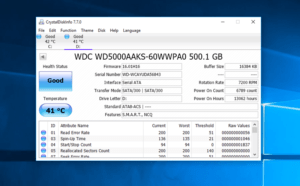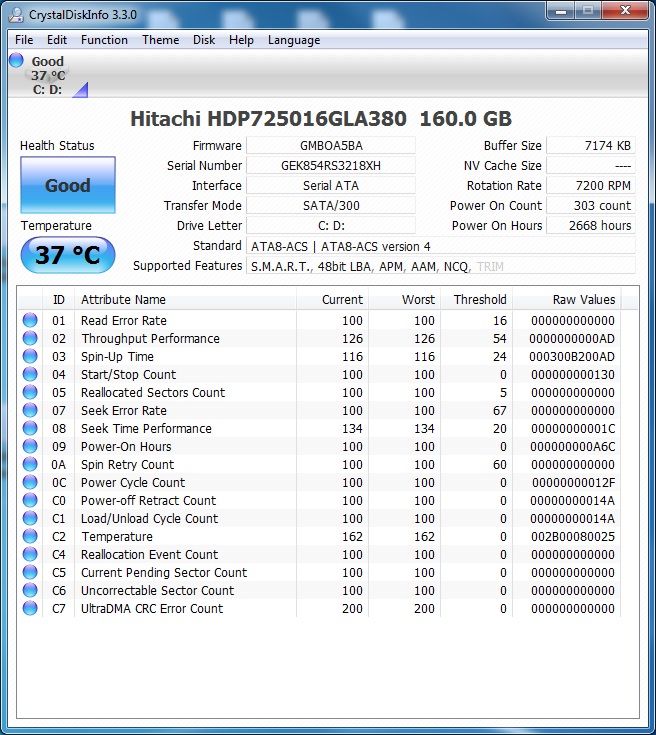
But if the sectors are multiplying, it's a sure sign that something is wrong.įrom the rest of the metrics, if one deserves our attention, CrystalDiskInfo will change its color to yellow for caution or red if it is bad. A single sector isn't the messenger of a complete hard disk failure by itself.

Reallocated sectors are one of the most severe conditions for a hard drive. In the above example, the Reallocated Sectors Count is 0, not 100 or 10. First we go to Function -> Advanced Feature -> Raw Values and select 10.Īfter that, we completely disregard the "Current", "Worst" and "Threshold" columns, and only look at the raw values. While the Health Status is loud and clear, and pretty easy to understand, the rest of the data can be daunting for a beginner. How to read and interpret CrystalDiskInfo data Others are more serious metrics, like the Reallocated Sectors Count.Īs you understand, having a "Caution" or a "Bad" health status can predict imminent hard drive failure. Some of them are simple statistics, such as the Start/Stop Count, the Power-On Hours, or the Power Cycle Count. On the bottom half of the main application Window, we will see all the fifteen different metrics CrystalDiskInfo takes into consideration, to predict hard drive failure. If the "Health Status" is "Good", the disk is probably OK. The first time we run the application, it will immediately show us the S.M.A.R.T. How CrystalDiskInfo predicts Hard Disk Failure DiskInfoX64 is for 64-bit Windows, and DiskInfo is for 32-bit Windows. If you don’t know your HDD’s model number for use in Google Search, head over to the operating system’s device manager.and run the DiskInfo application. Browse a handful of webpages and compare the results. This method is perhaps the easiest one, but remember that not all websites show accurate information. If you head to Google and search for specifications on your hard drive’s model number, you’ll find numerous websites with the information you need.


Method #1: Use Google Search to Find HDD Specs Here are the most common ways to digitally view HDD RPMs. Most sources with RPM details include other OS functions, but some third-party applications and websites do the same. If you don’t like tearing your PC apart to view the HDD’s RPM information in hopes of having it actually display the specs, you can use digital options. How to Digitally Check your Hard Drive Speed However, some manufacturers have made the specs label easy to find, thus eliminating the need to remove the device. This scenario means that you may have to take off a few screws and open up your computer. The best way to check your hard drive’s RPM rates is to take a look at its label.


 0 kommentar(er)
0 kommentar(er)
